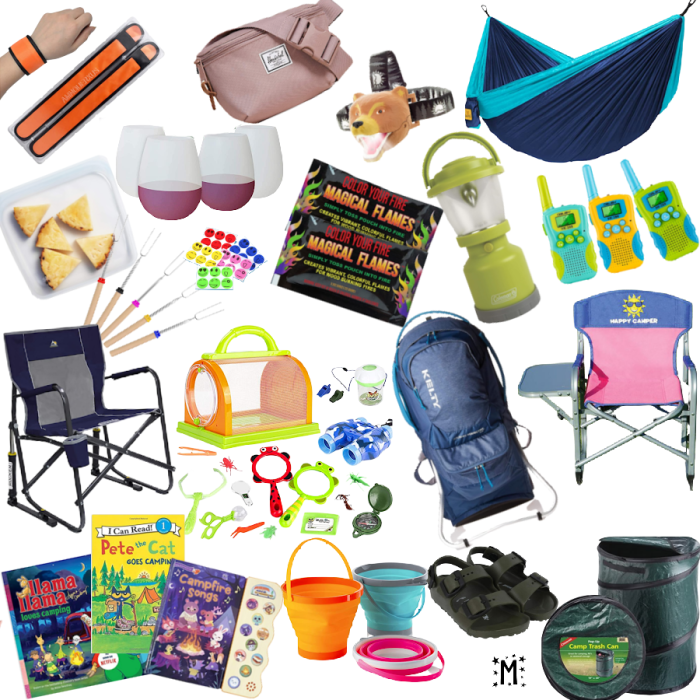Youth Camping Gear: Equipping your kids for an unforgettable outdoor adventure requires careful planning. This isn’t just about picking the cheapest stuff; it’s about ensuring safety, comfort, and ultimately, creating memories that will last a lifetime. We’ll dive into selecting the right tents, sleeping bags, backpacks, and clothing – all while keeping your budget in mind. Get ready to transform your family camping trips from stressful to spectacular.
From understanding age-appropriate weight limits and size considerations to mastering the art of layering clothing for unpredictable weather, this guide covers everything you need to know. We’ll also explore budget-friendly options, including where to find high-quality used gear, and discuss essential safety features to prioritize. By the end, you’ll be confident in your ability to outfit your children for any camping excursion, no matter the terrain or weather.
Types of Youth Camping Gear

Equipping your young adventurers for their first camping trip requires careful consideration. Choosing the right gear isn’t just about comfort; it’s about safety, fostering a positive experience, and ensuring they develop a lifelong love for the outdoors. Youth-specific camping gear is designed with their smaller stature, lower weight capacity, and developing skills in mind. Selecting age-appropriate equipment is crucial for a successful and enjoyable camping experience.
Essential Youth Camping Gear
The following table categorizes essential youth camping gear, highlighting key features to consider when making your purchases. Remember, quality and functionality are paramount; investing in durable, well-made gear will pay dividends in the long run.
| Category | Item | Youth-Specific Features | Considerations |
|---|---|---|---|
| Sleeping | Sleeping Bag | Smaller size, lighter weight, often with kid-friendly designs and colors. Temperature ratings appropriate for the expected conditions. | Consider the child’s height and sleeping preferences. A mummy bag provides better warmth retention. |
| Shelter | Tent | Smaller footprint, lower profile, lighter weight materials, simpler setup. May feature brighter colors or fun designs. | Choose a tent with good ventilation to prevent condensation. Ensure it’s easy for the child to help set up and take down. |
| Carrying | Backpack | Smaller volume, lighter weight, adjustable straps to fit smaller frames, hip belt for better weight distribution. | Consider the weight of the gear the child will be carrying. Choose a pack with comfortable padding and breathable materials. Start with smaller packs and gradually increase size as needed. |
| Cooking | Cooking Equipment | Lightweight, compact cooksets, easy-to-use utensils, kid-friendly mess kits. | Prioritize simple, easy-to-clean items. Consider using pre-prepared meals or freeze-dried food to simplify cooking. |
| Clothing | Clothing Layers | Moisture-wicking base layers, insulated mid-layers, waterproof and windproof outer shell. Choose quick-drying materials. | Consider the climate and weather conditions. Pack extra socks and underwear. Brightly colored clothing enhances visibility. |
Differentiating Youth and Adult Gear
The primary differences between youth and adult camping gear lie in size, weight, and functionality. Youth gear is significantly smaller and lighter, making it easier for children to carry and manage. Adult gear often prioritizes durability and features over weight, while youth gear balances both aspects. For example, a youth backpack will have a smaller volume and lighter frame than an adult backpack, but it will still offer the necessary features for carrying essential gear.
Similarly, a youth sleeping bag is designed to fit a smaller body and will have a lower weight to minimize strain.
Age-Appropriate Gear Selection, Youth Camping Gear
Choosing age-appropriate gear is critical for safety and enjoyment. Younger children may need more assistance with setting up tents and carrying gear, so selecting lightweight and easy-to-use equipment is essential. As children grow and develop their skills, they can gradually transition to more advanced gear. Consider the child’s physical capabilities and experience level when making your selections. A 7-year-old will require different gear than a 15-year-old, both in terms of size and functionality.
For example, a younger child might need a smaller, simpler tent, while an older child could handle a larger, more feature-rich model. Always prioritize safety and comfort when making your choices.
Successfully equipping your young adventurers for a camping trip is more than just ticking off a checklist; it’s about investing in their safety, comfort, and the creation of lasting memories. By prioritizing age-appropriate gear, understanding essential safety features, and planning a budget that works for your family, you can transform your camping trips into unforgettable experiences. Remember, preparation is key to a successful and enjoyable adventure for everyone involved.
So, pack your bags, grab your gear, and get ready to make some memories!

